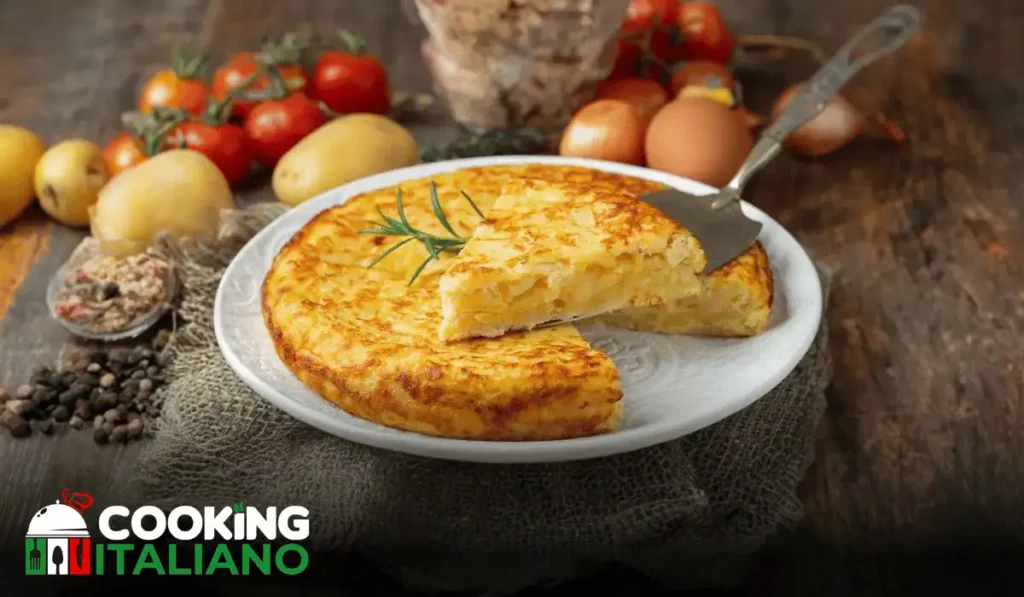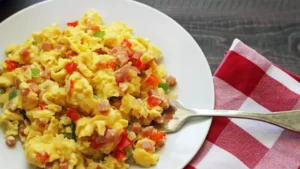Get ready to delight your taste buds with a classic Italian potato frittata. This savory dish combines fluffy eggs, crispy potatoes, and a medley of rich flavors, promising a culinary favorite that leaves you craving more. The potatoes, infused with onion, garlic, and herbs, are expertly paired with eggs, cheese, and other delicious ingredients, ensuring a perfectly balanced meal suitable for any occasion.

Embark on a culinary journey as we guide you through crafting the perfect frittata. Learn the art of creating a flavorful and visually appealing dish, mastering the right ratios of ingredients and cooking techniques like a pro. Whether you’re an aspiring chef, a food enthusiast, or someone who appreciates a good meal, this timeless classic promises to satisfy your cravings and bring comfort through each delicious bite.
Italian Potato Frittata

Ingredients
To master the potato frittata, you’ll need a handful of easily sourced ingredients. Don’t be fooled by their simplicity; when combined, they yield a dish that’s greater than the sum of its parts.
For the Basic Frittata
- 6 large eggs, beaten
- 2 medium potatoes, thinly sliced
- 1 onion, finely chopped
- 2 cloves of garlic, minced
- 2 tbsp olive oil
- Salt and pepper to taste
Optional Add-ins for Customization
- Herbs (parsley, basil, or oregano)
- Cheese (grated Parmigiano-Reggiano, Pecorino Romano, or mozzarella)
- Meats (pancetta, sausage, or prosciutto)
- Vegetables (bell peppers, zucchini, or spinach)
Instructions
The key to a good frittata lies in a few simple techniques: the choice of pan, the layering of ingredients, and the application of the right heat at the right time.
Step 1: Prep Your Pan and Ingredients
Start by preheating your oven to 375°F (190°C). Next, place a non-stick, ovenproof skillet over medium heat and add one tablespoon of olive oil. While the pan is warming, prepare your ingredients as specified in the ingredient list.
Step 2: Sauté the Potatoes and Onions
After the oil shimmers, add the potatoes to the pan. Cook, stirring occasionally, until the potatoes are golden and tender, about 10 minutes. Stir in the onions and garlic and continue cooking until the onions are soft and translucent.
Step 3: Layer and Cook the Frittata
Once your vegetables are cooked, spread them evenly in the skillet. Pour the beaten eggs over the top. Shake the pan gently to allow the eggs to settle. Reduce the heat to low and cook for about 10 minutes, or until the edges begin to set but the center is still slightly runny.
Step 4: Add the Finishing Touches
If you’re including any additional ingredients, now’s the time to sprinkle them over the top of your frittata. Transfer the skillet to the preheated oven and bake for 15 to 20 minutes, or until the frittata is set and the top is lightly golden in color.
Step 5: Serve and Enjoy
Remove the frittata from the oven and let it cool for a few minutes. Using a spatula, loosen the edges from the skillet, slide it onto a cutting board, and slice. Serve warm or at room temperature with a salad or a slice of crusty bread.

DID YOU MAKE THIS RECIPE?
Tag @amcookingitaliano on Instagram and hashtag it #amcookingitaliano!
Tips for Customization: Making It Yours
The beauty of the potato frittata is its flexibility. Once you’ve mastered the basic technique, it’s a canvas for your culinary creativity. Here are a few ideas to make your frittata uniquely delicious.
Herb It Up
Fresh or dried herbs can add depth and freshness to your frittata. One tablespoon of chopped fresh herbs or one teaspoon of dried herbs is a good starting point. Mix them into your beaten eggs for an even distribution.

Cheesy Goodness
Choose your favorite cheese to add creaminess and flavor. For a classic Italian taste, try a combination of Parmigiano-Reggiano and mozzarella. Aim for about 1/2 cup of grated cheese. Be sure to sprinkle it over the frittata just before baking to prevent it from burning.
Fill It In
Meats and veggies can take your frittata from a side dish to the main event. Cook any meats or heartier vegetables along with your potatoes. For more delicate veggies like spinach, cook them separately and add them in just before baking.
How to Store: Enjoying the Frittata Beyond the First Bite
Frittata is a dish that not only tastes great fresh but also holds up well for leftovers. Store any uneaten portion in an airtight container in the refrigerator for up to three days. To reheat, simply warm individual slices in a skillet over low heat or pop them in the microwave for a quick fix.
Conclusion: Frittata, Sì!
The classic Italian potato frittata is a dish that’s stood the test of time, adored by many for its simplicity, heartiness, and warm, comforting flavors. As you’ve seen, it’s incredibly easy to make and even easier to love. Whether enjoyed with family, friends, or solo, this dish brings the taste of Italy to your table in a way that’s undeniably homemade and delicious.
I hope this recipe encourages you to don your apron and give it a try. As you savor each bite, may it inspire not just fullness but the joy that comes with creating and enjoying good food. Buon appetite!
FAQs
- What’s the difference between a frittata and an omelette?
While both frittatas and omelettes are made with beaten eggs, the main difference lies in their preparation and presentation. Omelettes are cooked quickly over high heat, folded, and eaten straight from the skillet. Frittatas are started on the stovetop and finished in the oven, often in the skillet, and are served in wedges at any temperature.
- Can I make a frittata without an oven?
Absolutely! While the oven gives the frittata a lovely, uniform finish, you can also cook it entirely on the stove. To do so, cover the skillet after adding the eggs and cook on low heat until the top is just set, checking occasionally to prevent burning.
- Is it possible to make a frittata ahead of time?
Yes, you can prepare a frittata up to a day in advance. Follow the recipe until just before baking it in the oven, then cover the skillet and refrigerate. When you’re ready to serve, simply uncover and bake as directed, adding a few extra minutes to account for the chill of the ingredients.
















